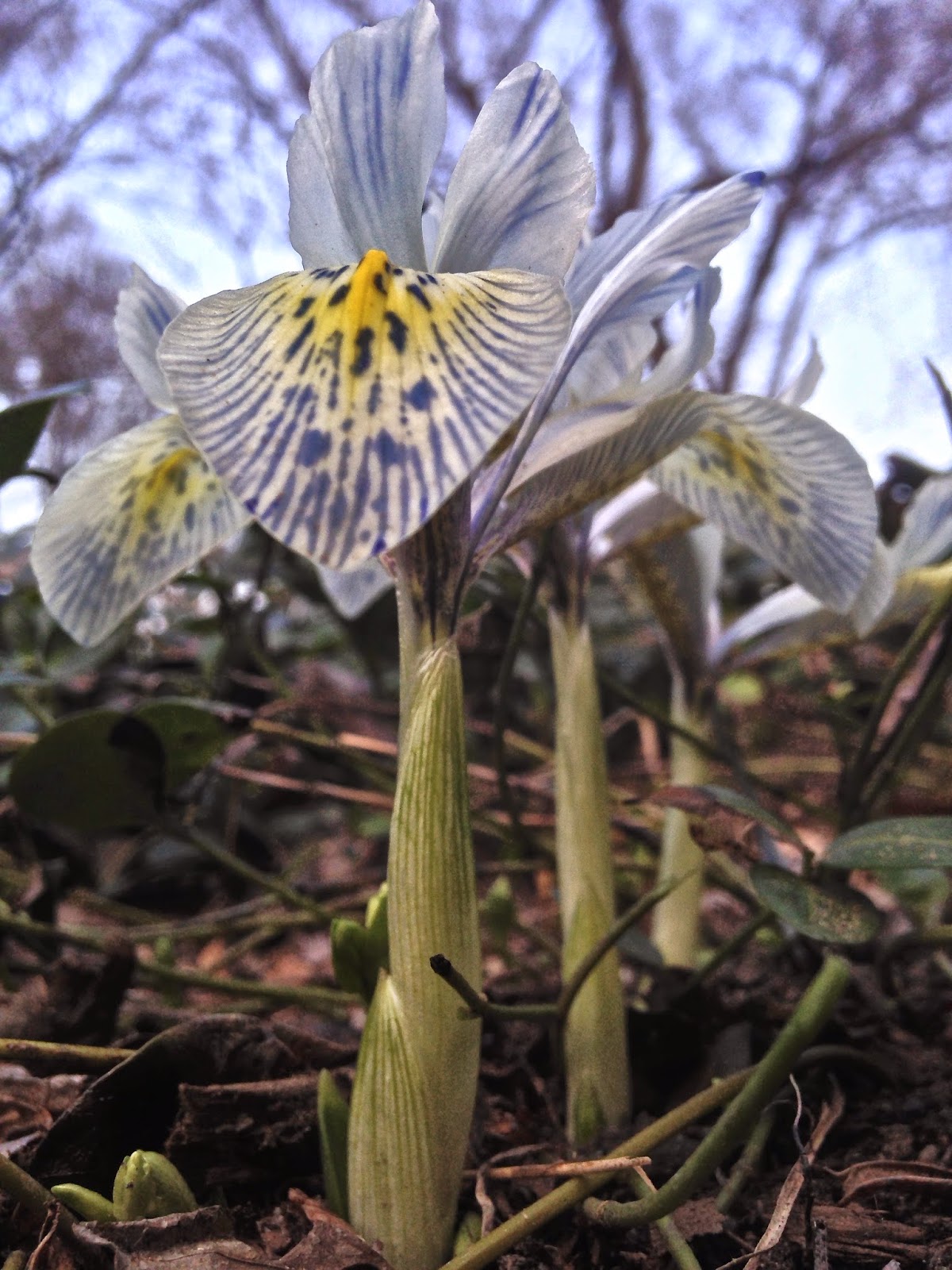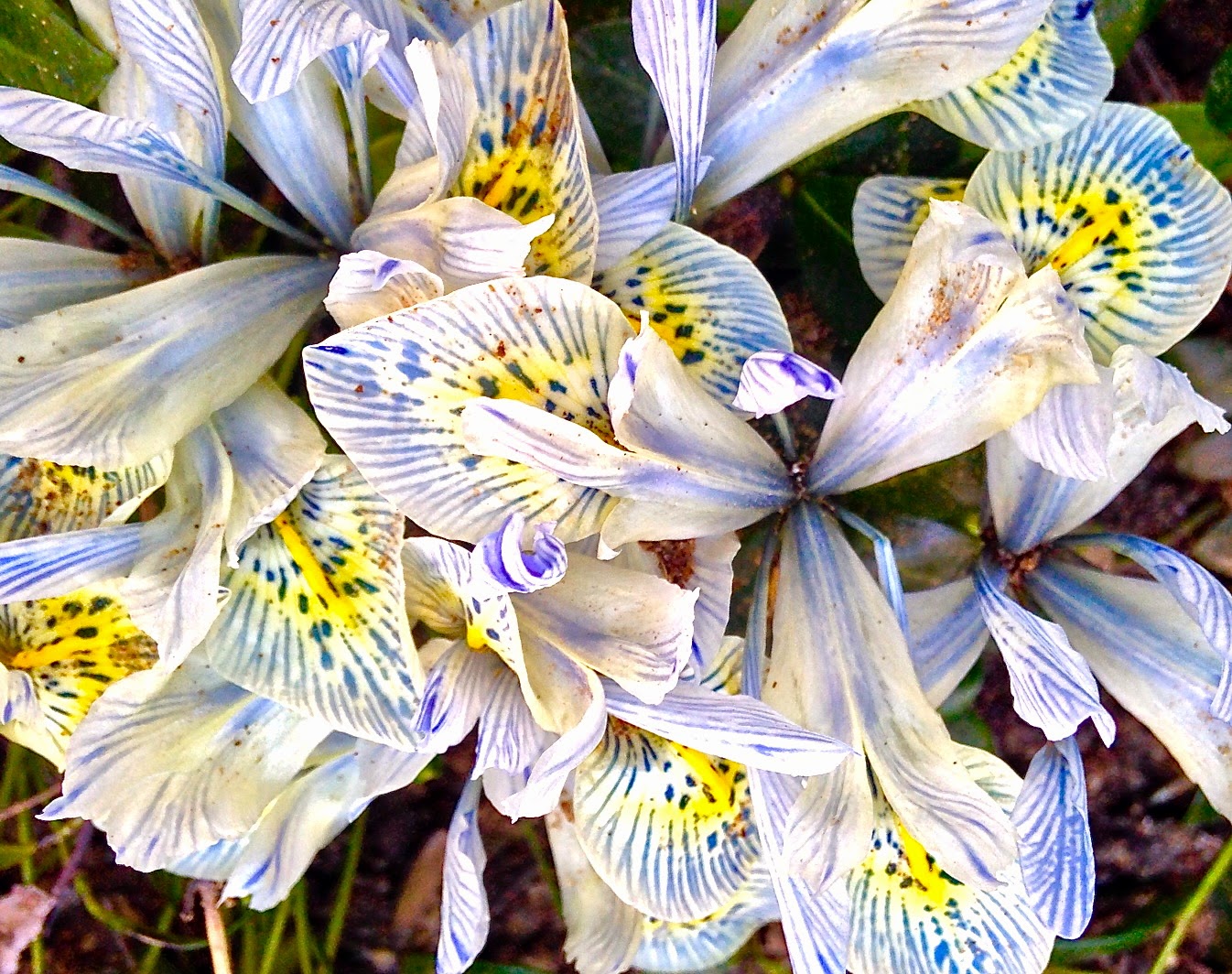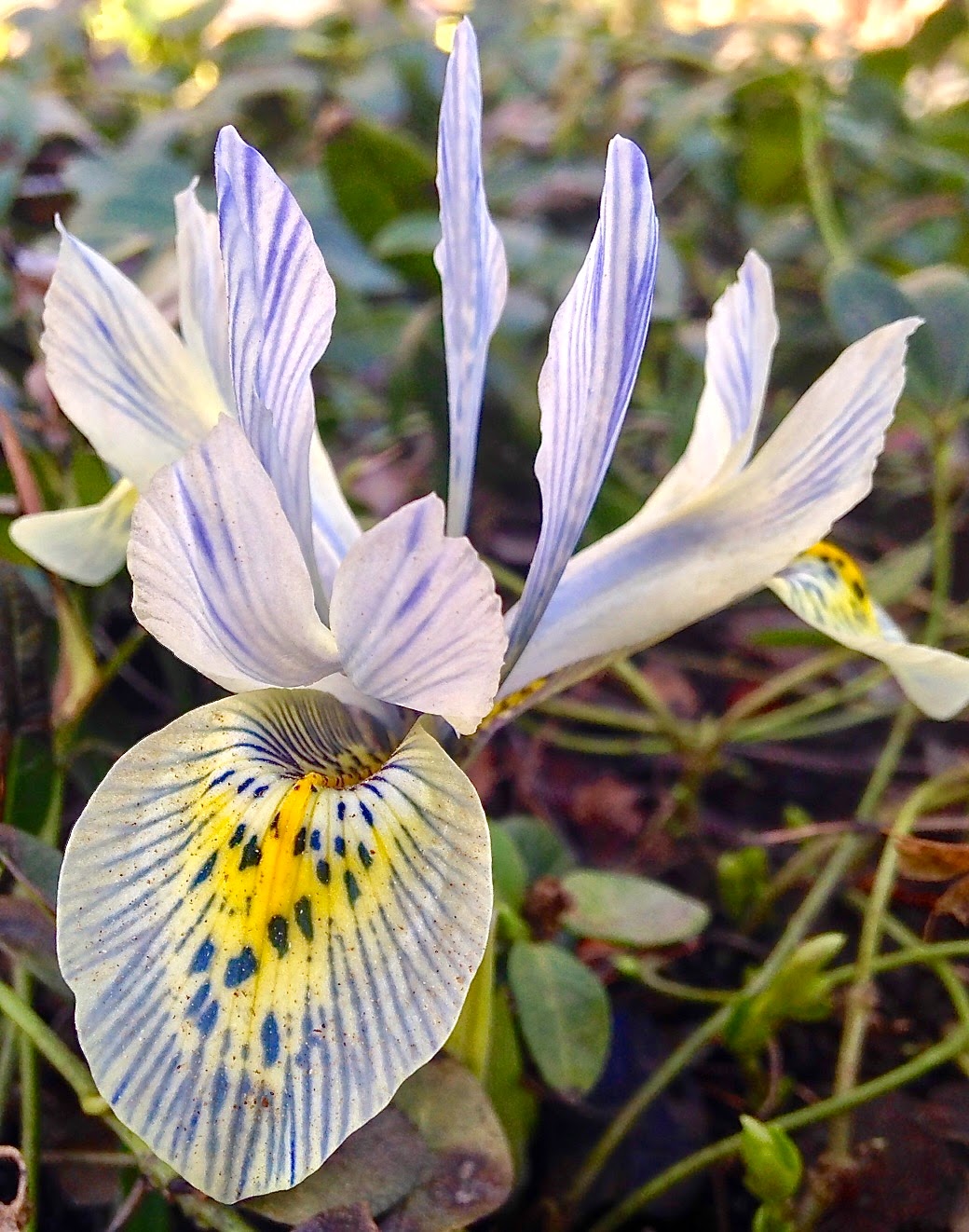Even on an overcast, raw, why-are-we-still-wearing-mittens kind of day, these patches of yellow make their own sunny weather. In the foreground is the daffodil "Yellow Cheerfulness," the middle ground is covered with"Wisley," and forsythia "Lynwood Gold" rules the background.
Tuesday, April 28, 2015
Sunday, April 26, 2015
Why the sunken garden makes me feel unsinkable
Visiting someone else's garden is always liberating: you're free of any responsibilities for unfinished seasonal chores, unblinkered of the eyesores of your garden design failures, and unburdened of battling nature's imperfections, your poor choices, or chance's victims.
I'm always glad to have an excuse to pop into the Sunken Garden at Radcliffe Institute. A tall brick wall encloses the street sides, so passersby are likely to miss this serene site unless they peek through the Radcliffe Yard gates. Once inside, sounds of a fountain and weathered memorial benches offer a respite from the daily grind.
Despite today's breezy, sunny weather, chilly temperatures continue to hold a full flowering spring at a distance. Nevertheless, the fern fiddleheads are stretching through their netted coats, white-flowering magnolias (Magnolia x stellata) are flicking in the wind, and Siberian squills (Scilla siberica) circle the base of a massive beech tree.
I'm always glad to have an excuse to pop into the Sunken Garden at Radcliffe Institute. A tall brick wall encloses the street sides, so passersby are likely to miss this serene site unless they peek through the Radcliffe Yard gates. Once inside, sounds of a fountain and weathered memorial benches offer a respite from the daily grind.
Despite today's breezy, sunny weather, chilly temperatures continue to hold a full flowering spring at a distance. Nevertheless, the fern fiddleheads are stretching through their netted coats, white-flowering magnolias (Magnolia x stellata) are flicking in the wind, and Siberian squills (Scilla siberica) circle the base of a massive beech tree.
Monday, April 20, 2015
Garden goal roll, 2015
It's spring now, so all things horticultural are possible. Cue the cock-eyed optimist: I'm preparing my annual garden goal roll: what needs to be done, when it should be done, and where it's all happening.
April
Dust peonies with copper fungicide to limit blight. Done 4/19/2015
Top-dress spring-flowering bulbs with 3-5-3 when the leaf-tips emerge. Except for small front walk bed, done 4/19/2015
Place plant orders.
* From Swan Island or other dahlia nursery: some small yellow dahlias, like "Baby Yellow," for old side bed?
Prune and clean up shrubs damaged by winter snows.
Shape "New Dawn" rose canes. And figure out a support structure.
Start renovation of back property line bed
* Remove some lilies of the valley.
* Consider what else would improve this space. Something low and chartreuse? Or grassy?
* Move Japanese painted fern to more visible location. Again, clear out lilies of the valley?
Assess perennials in the dry bed along the northeast side of the house. Maybe cut this bed a bit bigger?
Feed evergreens along front of house with Holly-Tone.
Dose "New Dawn" rose with 1/2 cup of Epsom salts in 2 cups water.
Trim "Major Wheeler" honeysuckle back.
May
That stuff that you didn't get to last month? Do it now.
Review spring bulb performance. What needs to be replaced or amplified?
June
Move potted amaryllis bulbs outdoors and feed regularly with liquid fertilizer.
Edge garden beds.
Edge garden beds.
Prune into shape front foundation plantings and yews along side property line.
Scratch 1 1/4 cups of RoseTone around the roots of "New Dawn" climbing rose now monthly through the summer; be sure to stop feeding by August 15 in order to prevent developing new growth that will not have time to harden off before fall temperatures drop.
After flowering, shear Amsonia hubrichtii by 1/3 of its height to promote better form.
After flowering, shear Amsonia hubrichtii by 1/3 of its height to promote better form.
When it is 3 feet tall, cut Joe pye weed "Gateway" back to half its height to encourage dense growth.
Stake dahlias when the tubers are planted and again and again as they grow. Stop dahlias by pinching stem back to four pairs of leaves.
Pinch back shasta daisies to 6".
And stake, stake, stake!
July
After flowering, prune the "New Dawn" climbing rose.
Prune back 50-80% of "Major Wheeler" honeysuckle after bloom is over.
Late August/Early September
Separate Siberian irises to left of kitchen door (Eric the Red).
Time to order spring bulbs!
* Indoor at least 25 paperwhite narcissus bulbs and 2 amaryllis bulbs
* Outdoor: 200 Iris reticulata "Katherine Hodgkin"
Columbus Day
Plant spring bulbs.
Dig in bone meal around peonies.
Lightly feed evergreens along front of house with Holly-Tone.
Move potted amaryllis bulbs indoors and chill in refrigerator.
Veterans Day
While daytime temperatures are still above 40 degrees, spray an anti-transpirant, like Wilt-Pruf or Wilt Stop, on "Sky Needle" hollies to prevent winter kill.
Top-dress beds with composted cow manure.
Thanksgiving
Winter-sow seeds.
Sunday, April 19, 2015
Boston Strong (and small and slow)
According to yesterday's news broadcast, this year's harsh winter has stalled us several weeks' behind our usual seasonal spring schedule. So the blue and yellow markings of these little Iris reticulata "Katherine Hodgkin" typically don't unfurl in synchrony with the colorful celebration of the Boston Marathon.
Welcome signs of spring! Several clutches of "Katherine Hodgkin" have survived for years in the beds along our front walk. Their tiny blooms are the perfect size for passers-by to appreciate as they go up or down the street. Surrounded by darker myrtle plants, these irises' pale petals and spattering of yellow and blue visually pop--but pop delicately and without the hard garishness of some other spring starters.
 |
| Iris reticulata "Katherine Hodgkin" looking up |
 |
| Finish Line, Old North Church, looking up |
Welcome signs of spring! Several clutches of "Katherine Hodgkin" have survived for years in the beds along our front walk. Their tiny blooms are the perfect size for passers-by to appreciate as they go up or down the street. Surrounded by darker myrtle plants, these irises' pale petals and spattering of yellow and blue visually pop--but pop delicately and without the hard garishness of some other spring starters.
 |
| Iris reticulata "Katherine Hodgkin" from above |
Some years these irises flourish better than others. This spring, I've prepped for next year by freely feeding the beds with a 3-5-3 fertilizer. But I'm thinking that the best way to hasten my yield would simply be to plant another 200 or so bulbs.
 |
| Iris reticulata "Katherine Hodgkin" |
And godspeed to all the runners tomorrow!
Subscribe to:
Comments (Atom)







